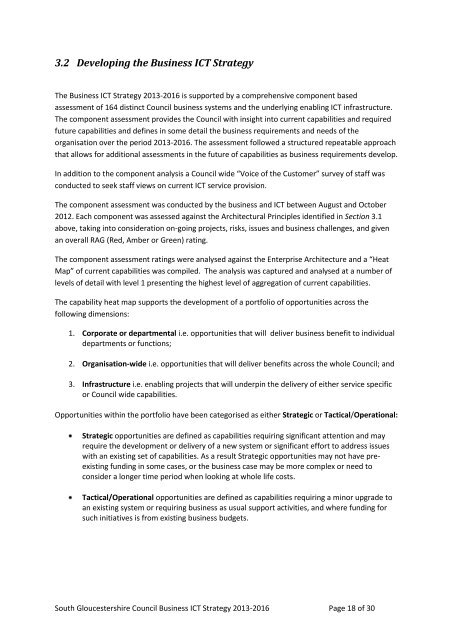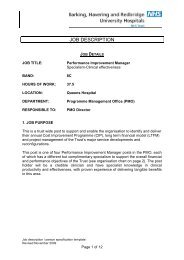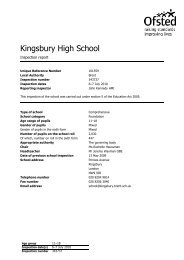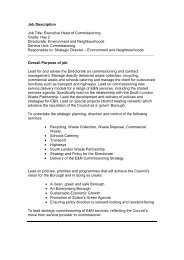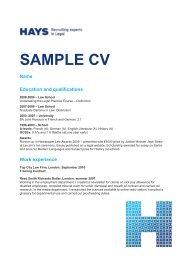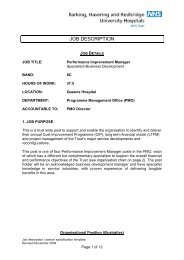ICT Strategy 2013 - Hays
ICT Strategy 2013 - Hays
ICT Strategy 2013 - Hays
Create successful ePaper yourself
Turn your PDF publications into a flip-book with our unique Google optimized e-Paper software.
3.2 Developing the Business <strong>ICT</strong> <strong>Strategy</strong><br />
The Business <strong>ICT</strong> <strong>Strategy</strong> <strong>2013</strong>-2016 is supported by a comprehensive component based<br />
assessment of 164 distinct Council business systems and the underlying enabling <strong>ICT</strong> infrastructure.<br />
The component assessment provides the Council with insight into current capabilities and required<br />
future capabilities and defines in some detail the business requirements and needs of the<br />
organisation over the period <strong>2013</strong>-2016. The assessment followed a structured repeatable approach<br />
that allows for additional assessments in the future of capabilities as business requirements develop.<br />
In addition to the component analysis a Council wide “Voice of the Customer” survey of staff was<br />
conducted to seek staff views on current <strong>ICT</strong> service provision.<br />
The component assessment was conducted by the business and <strong>ICT</strong> between August and October<br />
2012. Each component was assessed against the Architectural Principles identified in Section 3.1<br />
above, taking into consideration on-going projects, risks, issues and business challenges, and given<br />
an overall RAG (Red, Amber or Green) rating.<br />
The component assessment ratings were analysed against the Enterprise Architecture and a “Heat<br />
Map” of current capabilities was compiled. The analysis was captured and analysed at a number of<br />
levels of detail with level 1 presenting the highest level of aggregation of current capabilities.<br />
The capability heat map supports the development of a portfolio of opportunities across the<br />
following dimensions:<br />
1. Corporate or departmental i.e. opportunities that will deliver business benefit to individual<br />
departments or functions;<br />
2. Organisation-wide i.e. opportunities that will deliver benefits across the whole Council; and<br />
3. Infrastructure i.e. enabling projects that will underpin the delivery of either service specific<br />
or Council wide capabilities.<br />
Opportunities within the portfolio have been categorised as either Strategic or Tactical/Operational:<br />
Strategic opportunities are defined as capabilities requiring significant attention and may<br />
require the development or delivery of a new system or significant effort to address issues<br />
with an existing set of capabilities. As a result Strategic opportunities may not have preexisting<br />
funding in some cases, or the business case may be more complex or need to<br />
consider a longer time period when looking at whole life costs.<br />
Tactical/Operational opportunities are defined as capabilities requiring a minor upgrade to<br />
an existing system or requiring business as usual support activities, and where funding for<br />
such initiatives is from existing business budgets.<br />
South Gloucestershire Council Business <strong>ICT</strong> <strong>Strategy</strong> <strong>2013</strong>-2016 Page 18 of 30


